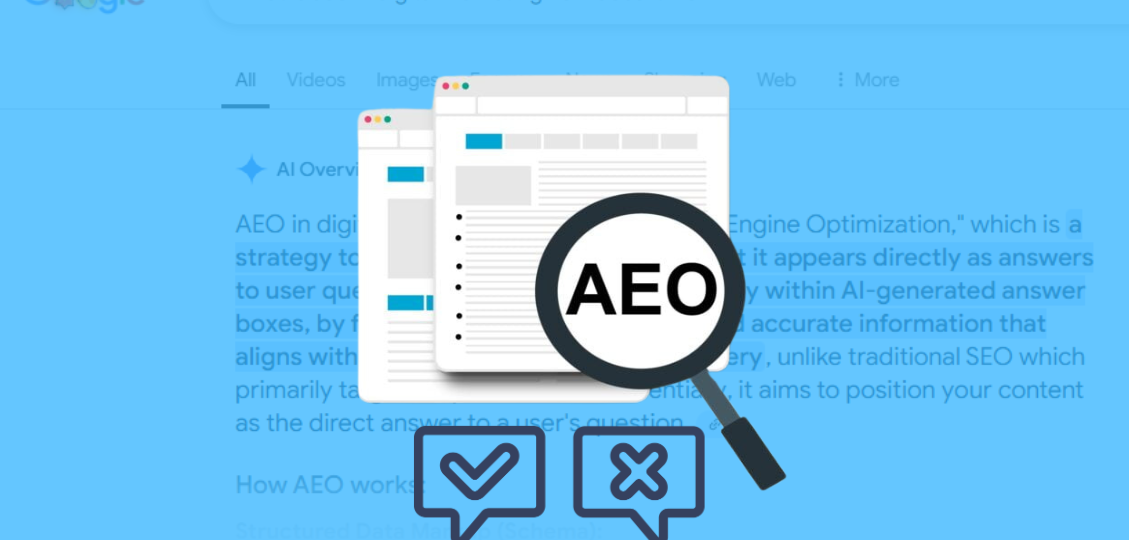
Last Updated on enero 10, 2025 by anytimedigital
Understanding Answer Engine Optimization (AEO)
Definition of AEO
For businesses looking to enhance their online presence, Answer Engine Optimization (AEO) serves as a strategic approach aimed at providing direct and accurate answers to user queries. This method focuses on optimizing your content to appear in featured snippets and other prominent search result areas frequently leveraged by voice and AI-driven search engines. By prioritizing concise responses, AEO allows you to effectively reach users who seek quick information, thereby positioning your brand as a trusted source in your industry.
Importance in Digital Marketing
Beside its potential for enhanced visibility, AEO leads to a stronger connection with your audience by fulfilling their specific informational needs. As search engines evolve, the expectation for immediate answers from brands increases. When you optimize for AEO, you not only meet this demand but also build authority and trust with users by providing reliable insights quickly and efficiently. This approach can differentiate your business in a crowded marketplace, ensuring that your brand remains top-of-mind when users search for related services or products.
Benefits of Implementing AEO
Enhanced Visibility in Search Results
Increased Traffic and Engagement
Against the backdrop of a competitive digital landscape, implementing AEO channels traffic directly to your website, thereby enhancing user engagement. When users find their questions answered swiftly and accurately, they are more inclined to explore further and discover additional services or products you offer. By optimizing for AEO, you harness the power of direct answers to position your brand as an authoritative source, effectively encouraging site visits that extend beyond the initial query.
Challenges of AEO Implementation
Technical Requirements and Expertise
Content Simplification Risks
Above all, there’s a risk of simplifying your content to the point where it no longer serves your audience effectively. In an effort to produce ultra-concise answers that cater to AEO, you may inadvertently strip your offerings of the detail and nuance that set you apart from competitors. This reduction can compromise the depth of information that users often seek, potentially leading to a disconnect between your brand and its audience. Consequently, users may not find the comprehensive insights they expect from an authoritative source, which can impact their trust in your business.
Best Practices for AEO
Utilizing Structured Data
Crafting Concise and Relevant Content
After you’ve laid the groundwork with structured data, focus on crafting concise and relevant content. Your answers should address users’ queries directly while being succinct enough to grab attention in search results. Aim for clarity and precision, providing the information users seek without unnecessary fluff. This strategy not only aligns with the principles of AEO but also enhances user experience by ensuring that your content is easily digestible.
Measuring the Impact of AEO
Key Performance Indicators (KPIs)
Tools for Tracking Success
The landscape of digital marketing is rich with analytics tools that can help you track the success of your AEO campaigns. Google Analytics, for instance, allows you to monitor changes in organic traffic patterns and user engagement, while SEMrush or Ahrefs can assist in evaluating keyword rankings and featured snippet placements. These tools deliver actionable insights into your site’s performance, highlighting areas for improvement. You might also explore the insights offered by Schema Markup Validator to ensure your structured data implementation is both accurate and effective.
Case Studies: Successful AEO Implementations
-
Company A: Achieved a 40% increase in organic traffic within 6 months by optimizing their FAQ section for featured snippets.
-
Company B: Secured 3x more visibility in voice search results after implementing structured data markup on their website.
-
Company C: Reported a 25% increase in conversion rates from organic search following AEO-focused content adjustments.
-
Company D: Boosted brand authority and user trust, as evidenced by a 50% rise in time spent on page when answering queries directly in search results.
-
Company E: Experienced a drop in bounce rates by 20% after adopting AEO strategies and providing clear, concise answers to common user questions.
Industry Examples
Lessons Learned
Case studies reveal valuable insights into the implementation of AEO in various business strategies. Many businesses have learned that focusing on user intent is necessary; aligning content with the specific questions your audience is asking can significantly enhance your chances of being featured in snippets. It’s also evident that testing and analyzing data post-implementation is key. This iterative approach allows you to refine your content and structured data continuously, ensuring you maintain a competitive edge.
To wrap up
To wrap up, implementing Answer Engine Optimization (AEO) in your digital marketing strategy can offer significant advantages. By focusing on delivering concise and accurate answers, you can enhance your visibility in search results, particularly in featured snippets that are favored in voice and AI-driven searches. This not only boosts your website traffic but also builds trust with your audience, positioning you as an authority in your field. Your efforts in optimizing content for AEO can serve as a key differentiation in a crowded marketplace, providing the competitive edge needed in today’s fast-paced digital environment.

